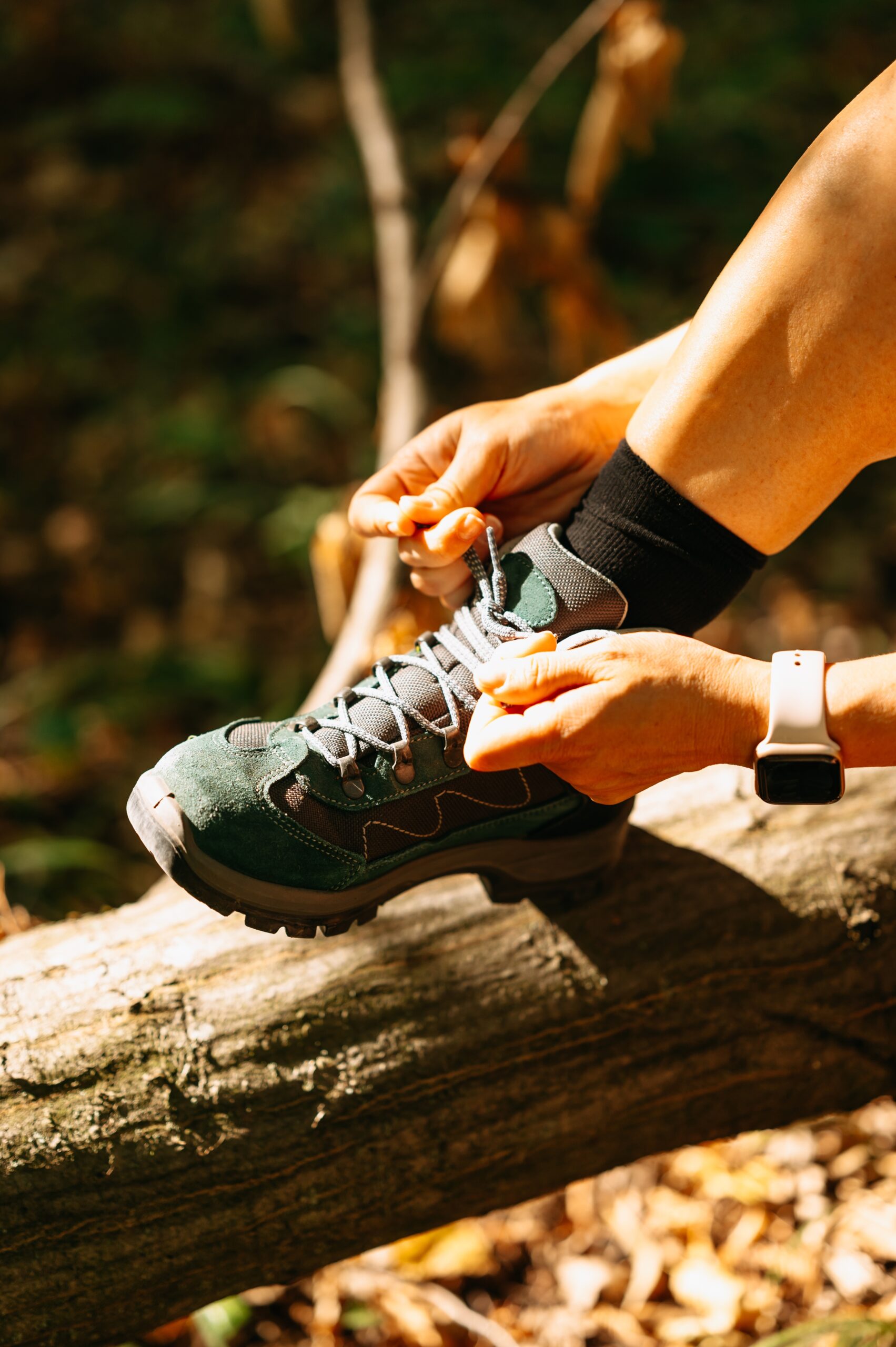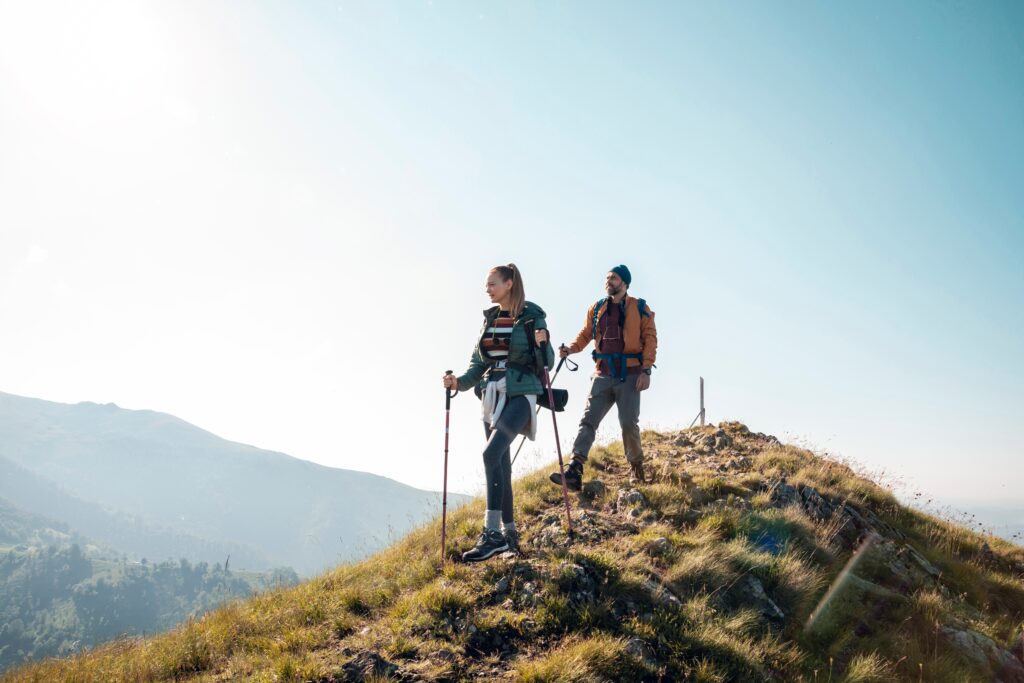
How to Choose the Right Hiking Shoes for Your Adventure
Your hiking experience begins and ends with your feet. Blisters, ankle pain, or wet socks can turn a dream day on the trail into a nightmare. Whether you’re planning a gentle countryside walk or a multi-day mountain trek, the right hiking shoes are the single most important investment you’ll make. This guide walks you through the different types of hiking footwear, how to assess fit and support, and which features to prioritise based on your adventure style.
Outline
- Why Footwear Matters More Than You Think
- The Main Types of Hiking Footwear
- How to Match Your Shoe to Your Hike
- Key Features to Look For
- Understanding Fit: Sizing, Width and Break-In Time
- Socks Matter Too: The Perfect Pairing
- Lightweight vs. Heavy-Duty: Pros and Cons
- Popular Brands (and What They’re Known For)
- When to Replace Your Hiking Shoes
- Final Thoughts: Walk Far, Walk Well
Why Footwear Matters More Than You Think
It’s tempting to hit the trail in your old trainers — especially if the hike is short. But even modest terrain can challenge your ankles, arches, and toes. Good hiking shoes protect your feet, improve your stability, and increase your endurance.
Poor footwear leads to:
- Blisters and hotspots
- Ankle rolls or knee strain
- Slipping on wet or uneven ground
- Long-term foot and back pain
Hiking starts from the ground up — and so should your planning.
The Main Types of Hiking Footwear
Here’s a breakdown of the most common hiking footwear types:
| Type | Best For | Pros | Cons |
|---|---|---|---|
| Trail runners | Fast hikes, smooth trails, dry weather | Lightweight, breathable, flexible | Less ankle support, wear out faster |
| Hiking shoes | Day hikes, varied terrain | Comfortable, good grip, versatile | Less ankle protection than boots |
| Mid hiking boots | Longer hikes, rocky/muddy trails | Moderate ankle support, waterproof | Heavier than shoes |
| High hiking boots | Mountain hikes, heavy loads, backpacking | Maximum support, durable, stable | Heaviest and need breaking in |
| Approach shoes | Scrambling, rockier terrain | Excellent grip, precise foot control | Limited cushioning for long hikes |
👣 If in doubt, start with low hiking shoes — ideal for most beginner-friendly trails.
How to Match Your Shoe to Your Hike
The right hiking shoe depends on where you’re going, how long you’ll be out, and what kind of terrain you’ll face.
Ask yourself:
- How rough is the trail? (flat vs. rocky)
- Will it be wet or dry?
- Are you carrying a heavy backpack?
- Do you have existing foot or ankle issues?
Examples:
- Gentle forest walk, 2 hours: Trail runners or hiking shoes
- Mountain path, 1-day hike: Mid boots for support
- Multi-day trek with camping: High boots with strong grip and ankle stability
- Warm weather or desert terrain: Breathable trail shoes with mesh uppers
Key Features to Look For
Not all hiking footwear is made equal. Focus on these essential features:
Sole (Outsole):
- Lug pattern: Deep treads for grip, especially in mud or gravel
- Rubber type: Vibram soles are popular for durability and traction
Midsole:
- EVA foam: Softer, lighter, good for cushioning
- PU (polyurethane): Firmer, more durable, great for heavy loads
Upper:
- Leather: Durable, water-resistant, but heavier
- Synthetic mesh: Lightweight and breathable, but less protective
Waterproofing:
- GORE-TEX or similar membrane keeps feet dry in rain or puddles
- But note: Waterproof shoes may be warmer and take longer to dry if soaked
Toe protection:
- Rubber toe caps help avoid bruised toes on steep descents or rocky trails

Understanding Fit: Sizing, Width and Break-In Time
Fit is everything. Even the best hiking shoe will let you down if it doesn’t fit your foot properly.
What to look for:
- A snug heel: No slipping
- Wiggle room in the toe box
- Arch support that matches your foot
- A thumb’s width of space at the front when standing
Always try hiking shoes on with the socks you plan to wear. Try them in the afternoon (your feet swell through the day) and test walking downhill in-store if possible.
Break them in gradually — wear them on short walks before your big hike.
Socks Matter Too: The Perfect Pairing
Even the best hiking boots can’t help if your socks cause friction or retain moisture.
Choose:
- Merino wool or synthetic blends
- Cushioned soles for longer walks
- Seamless designs to prevent blisters
Avoid cotton — it traps moisture, which leads to cold feet and hot spots.
7. Lightweight vs. Heavy-Duty: Pros and Cons
Lightweight footwear:
- Encourages faster movement
- Reduces fatigue on long hikes
- Dries faster
- Ideal for good weather and well-maintained trails
Heavy-duty boots:
- Better protection from twists, rocks and roots
- Warmer and more durable
- Support when carrying heavy packs
- Can be overkill on easy trails
Your footwear should match the rest of your gear. If you’re hiking light, dress light.
8. Popular Brands (and What They’re Known For)
| Brand | Known For |
|---|---|
| Salomon | Trail runners, lightweight boots, modern designs |
| Merrell | All-round comfort and value, good for beginners |
| La Sportiva | Rugged, alpine-ready footwear |
| Lowa | Durable, European-built boots |
| HOKA ONE ONE | Cushioned trail runners, great for long distances |
| Scarpa | Mountaineering and technical hiking |
Try before you buy if possible — sizing can vary wildly between brands.
When to Replace Your Hiking Shoes
Even if your boots feel fine, worn soles or compromised support can lead to injury.
Signs it’s time to replace:
- Flattened tread or outsole peeling
- Midsole feels “dead” or less responsive
- Visible cracks or holes in the upper
- Persistent discomfort even after rest
On average:
- Trail runners last 300–800 km
- Hiking shoes: 800–1,000 km
- Heavy-duty boots: 1,000–1,500 km+
Rotate your shoes if you hike often — alternating helps preserve cushioning.
Final Thoughts: Walk Far, Walk Well
Choosing the right hiking shoes isn’t just about comfort — it’s about confidence, performance, and safety. Whether you’re navigating muddy paths, forest trails or mountain ridgelines, your shoes can empower or limit your journey.
Take your time, try different options, and remember: great adventures start from the ground up.